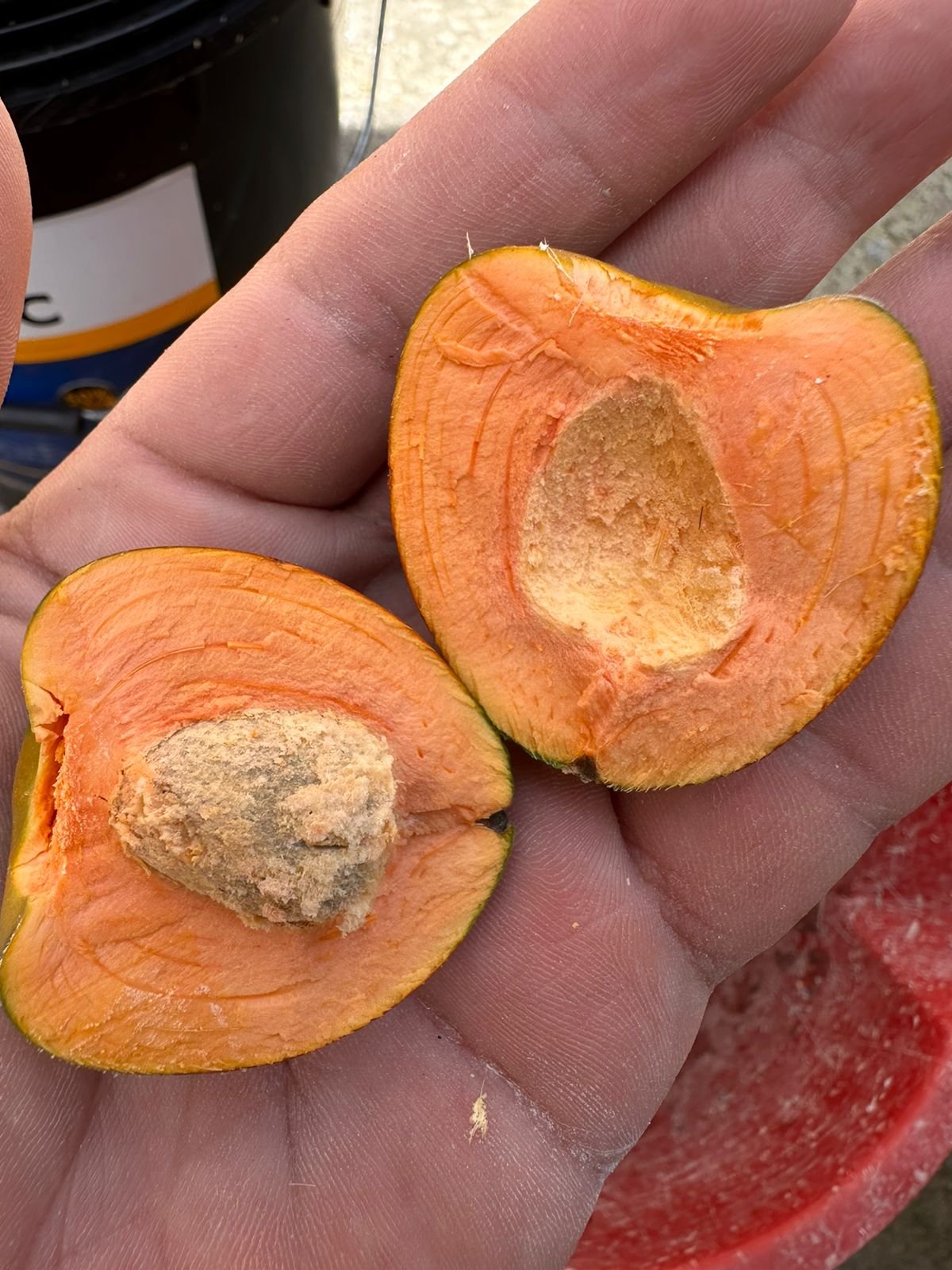Bactris Gasipaes - Peach Palm - Red Variety
Seeds were imported from Brazil. Bactris gasipaes is a multi-stemmed, evergreen, feather palm with spiny stems that can grow up to 20 meters tall. The plant usually forms a clump of stems from suckers at the base. You can use almost every part of this tree for food. The fruit is an acquired taste, mealy and nutty in flavor. The flavor is variable, ranging from bland to strong. This fruit is inedible raw, it is boiled in salt water for 30 - 60 minutes. Once cooked, people say it has a floury-textured, oily and pleasant tasting with good nutritious qualities. Seeds will be shipped in humid vermiculite. An edible oil is obtained from the seed. It is called oil of macanilla. The mesocarp oil has a relatively high proportion of unsaturated fatty acids, notably oleic acid, and contains no cholesterol. It is used for cooking. The seeds are also eaten raw. A salt substitute is made by cooking the spadix. The cooked male flowers are used as a condiment. The apical bud is cooked and eaten as a vegetable. A delicacy, in some areas it is eaten as a salad. Fresh, dried and canned palmito is being marketed for use in salads, soups and fillings and as roasted chips. Eating the bud effectively kills the trunk since it is unable to produce side shoots. Some plants in this species form multi-trunks and so harvesting the apical bud will only kill one stem, not the plant. This variety produces a red fruit when ripe.
Seeds were imported from Brazil. Bactris gasipaes is a multi-stemmed, evergreen, feather palm with spiny stems that can grow up to 20 meters tall. The plant usually forms a clump of stems from suckers at the base. You can use almost every part of this tree for food. The fruit is an acquired taste, mealy and nutty in flavor. The flavor is variable, ranging from bland to strong. This fruit is inedible raw, it is boiled in salt water for 30 - 60 minutes. Once cooked, people say it has a floury-textured, oily and pleasant tasting with good nutritious qualities. Seeds will be shipped in humid vermiculite. An edible oil is obtained from the seed. It is called oil of macanilla. The mesocarp oil has a relatively high proportion of unsaturated fatty acids, notably oleic acid, and contains no cholesterol. It is used for cooking. The seeds are also eaten raw. A salt substitute is made by cooking the spadix. The cooked male flowers are used as a condiment. The apical bud is cooked and eaten as a vegetable. A delicacy, in some areas it is eaten as a salad. Fresh, dried and canned palmito is being marketed for use in salads, soups and fillings and as roasted chips. Eating the bud effectively kills the trunk since it is unable to produce side shoots. Some plants in this species form multi-trunks and so harvesting the apical bud will only kill one stem, not the plant. This variety produces a red fruit when ripe.
Seeds were imported from Brazil. Bactris gasipaes is a multi-stemmed, evergreen, feather palm with spiny stems that can grow up to 20 meters tall. The plant usually forms a clump of stems from suckers at the base. You can use almost every part of this tree for food. The fruit is an acquired taste, mealy and nutty in flavor. The flavor is variable, ranging from bland to strong. This fruit is inedible raw, it is boiled in salt water for 30 - 60 minutes. Once cooked, people say it has a floury-textured, oily and pleasant tasting with good nutritious qualities. Seeds will be shipped in humid vermiculite. An edible oil is obtained from the seed. It is called oil of macanilla. The mesocarp oil has a relatively high proportion of unsaturated fatty acids, notably oleic acid, and contains no cholesterol. It is used for cooking. The seeds are also eaten raw. A salt substitute is made by cooking the spadix. The cooked male flowers are used as a condiment. The apical bud is cooked and eaten as a vegetable. A delicacy, in some areas it is eaten as a salad. Fresh, dried and canned palmito is being marketed for use in salads, soups and fillings and as roasted chips. Eating the bud effectively kills the trunk since it is unable to produce side shoots. Some plants in this species form multi-trunks and so harvesting the apical bud will only kill one stem, not the plant. This variety produces a red fruit when ripe.




